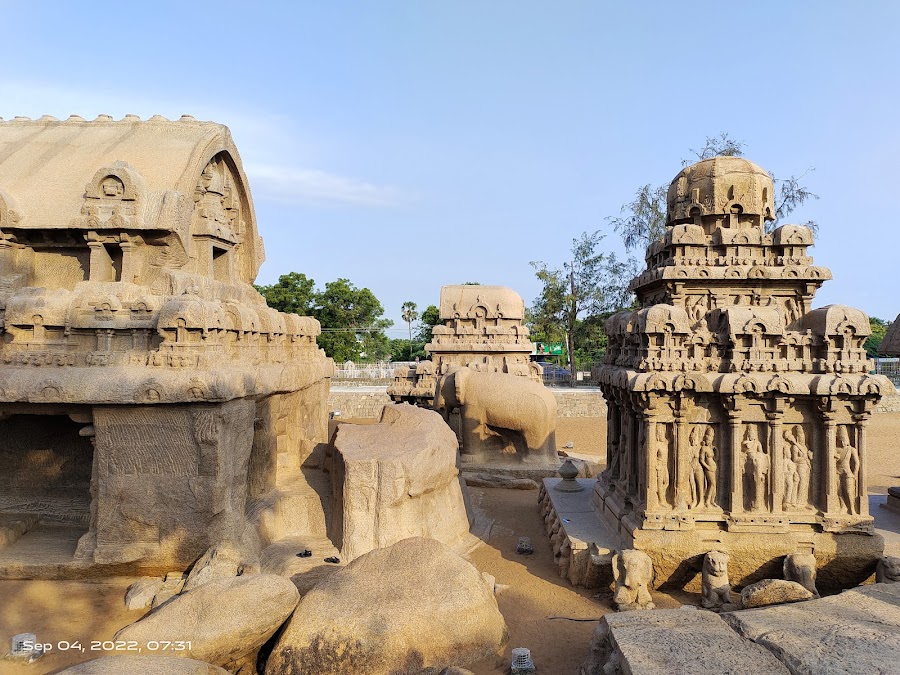
Five Rathas (Pancha Rathas)
Mahabalipuram, India
- Admire the intricate carvings and sculptures.
- Capture stunning photos of the Rathas.
- Explore the monolithic rock-cut temples.
- Learn about the Pallava dynasty's architecture.
- Reflect on the history and artistry.
Known for:
Description:
The Pancha Rathas, meaning 'Five Chariots', are a magnificent complex of monolithic rock-cut temples in Mahabalipuram. Each ratha is carved from a single piece of granite rock, representing a unique style of Dravidian architecture. These structures are named after the Pandavas (Arjuna, Bhima, Yudhisthira, Nakula, and Sahadeva) and Draupadi from the epic Mahabharata. However, the names are merely labels, as the structures have no connection to the epic. The complex showcases intricate carvings, sculptures, and architectural details, offering a glimpse into the artistic prowess of the Pallava dynasty. The unfinished state of some of the rathas adds to their mystique, inviting visitors to ponder the creative process behind these ancient wonders. It's a must-visit for anyone interested in history, architecture, and Indian mythology.
History:
The Pancha Rathas were created during the Pallava dynasty, primarily during the reign of King Narasimhavarman I Mamalla in the 7th century AD. The Pallavas were renowned for their patronage of art and architecture, and Mahabalipuram served as a crucial port city and a hub for their artistic endeavors. These monolithic structures represent an early stage of Dravidian temple architecture, showcasing a transition from rock-cut caves to structural temples. The complex was likely abandoned before completion, leaving some of the rathas unfinished. The purpose of the Pancha Rathas remains debated among historians and archaeologists. Some believe they were intended as model temples or experimental prototypes for larger temple complexes. Others suggest they were dedicated to specific deities, but definitive evidence is lacking. Despite their unfinished state, the Pancha Rathas stand as a testament to the Pallavas' innovative spirit and their mastery of rock-cut architecture.